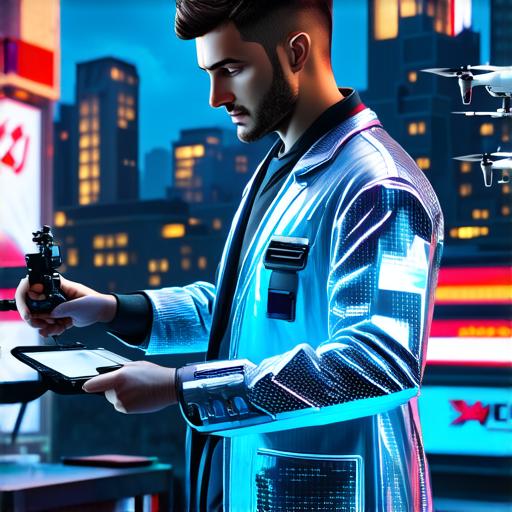1. Gaming and entertainment:
One of the most popular uses of AR is in gaming and entertainment. Games like Pokemon Go and Angry Birds have made millions of people around the world step outside and explore their environment using AR technology. With AR, game developers can create immersive experiences that blend real-world environments with digital content. For example, a player could be in a park chasing after a virtual creature or trying to solve puzzles using real-world objects as clues.
2. Education:
AR has also found its way into education. Teachers can use AR technology to create interactive lessons that engage students and make learning more fun. For example, a history teacher could use AR to bring the ancient world to life by superimposing digital content onto real-world objects like ruins or artifacts. Students could then explore these virtual environments and learn about different civilizations and cultures through hands-on experiences.
3. Training and simulation:
AR technology has also found its way into training and simulation. It can be used to create realistic simulations of complex tasks, allowing people to practice without risking their safety or the safety of others. For example, a pilot could use AR to simulate flying in different weather conditions, helping them prepare for real-world scenarios.
4. Marketing and advertising:
AR has also found its way into marketing and advertising. Companies can use AR technology to create interactive experiences that engage customers and make their products more memorable. For example, a car manufacturer could use AR to superimpose digital content onto a virtual model of their car, allowing customers to customize the car’s appearance and see how it would look in real life before making a purchase decision.
5. Healthcare:
AR has also found its way into healthcare. It can be used to create interactive visualizations that help doctors diagnose and treat patients. For example, a surgeon could use AR to superimpose digital content onto a patient’s body, allowing them to visualize the internal organs and plan their surgery with more precision.
6. Retail:
AR has also found its way into retail. It can be used to create interactive experiences that make shopping more fun and engaging. For example, a clothing retailer could use AR to superimpose digital content onto a virtual model of a customer’s body, allowing them to see how different clothes would look on them before making a purchase decision.
7. Manufacturing:

AR has also found its way into manufacturing. It can be used to create interactive visualizations that help manufacturers improve their production processes and reduce waste. For example, an automaker could use AR to superimpose digital content onto a virtual model of their car’s assembly line, allowing them to see where bottlenecks or inefficiencies are occurring and make adjustments accordingly.
8. Tourism:
AR has also found its way into tourism. It can be used to create interactive experiences that allow people to explore different parts of the world in a more immersive and engaging way. For example, a traveler could use AR to superimpose digital content onto a virtual model of a city’s skyline, allowing them to see what different attractions would look like in real life before visiting.
9. Sports:
AR has also found its way into sports. It can be used to create interactive experiences that make watching sports more engaging and interactive. For example, a football fan could use AR to superimpose digital content onto a virtual model of the field, allowing them to see what different players would look like in real life and track their movements during the game.
10. Gaming:
AR has also found its way into gaming. It can be used to create interactive experiences that allow people to play games in a more immersive and engaging way. For example, a player could use AR to superimpose digital content onto their surroundings, allowing them to interact with the game in a more realistic way.
Conclusion:
Augmented reality is a powerful technology that has many applications and use cases across different industries. As technology continues to evolve, we can expect to see even more innovative uses of AR in the future.
